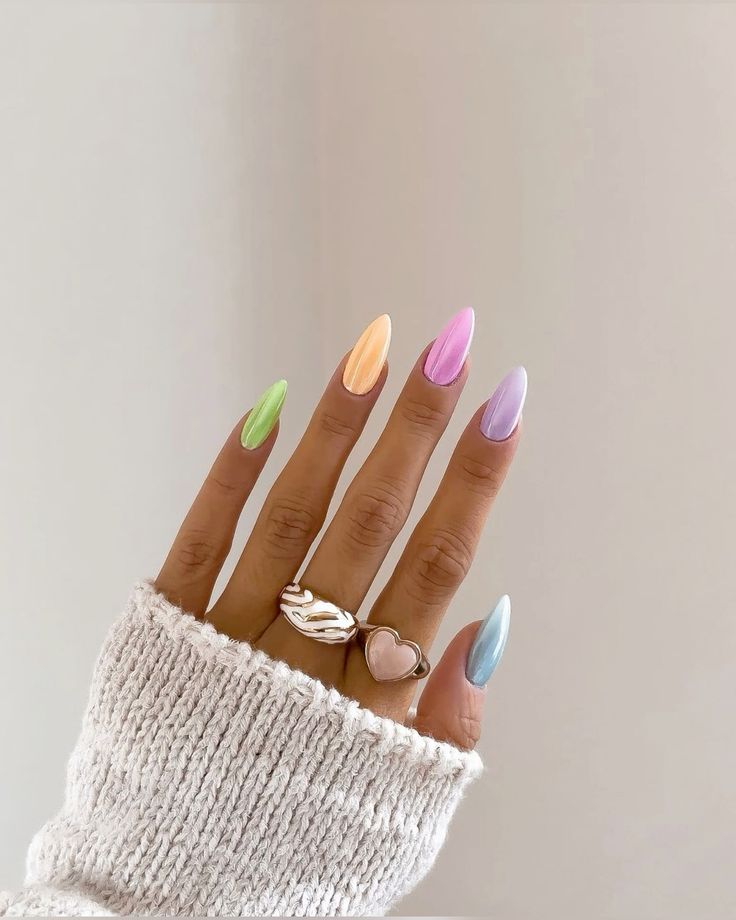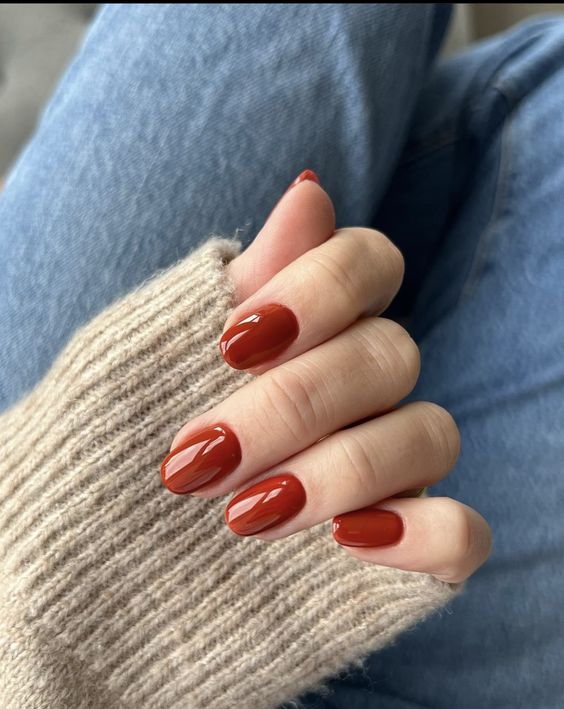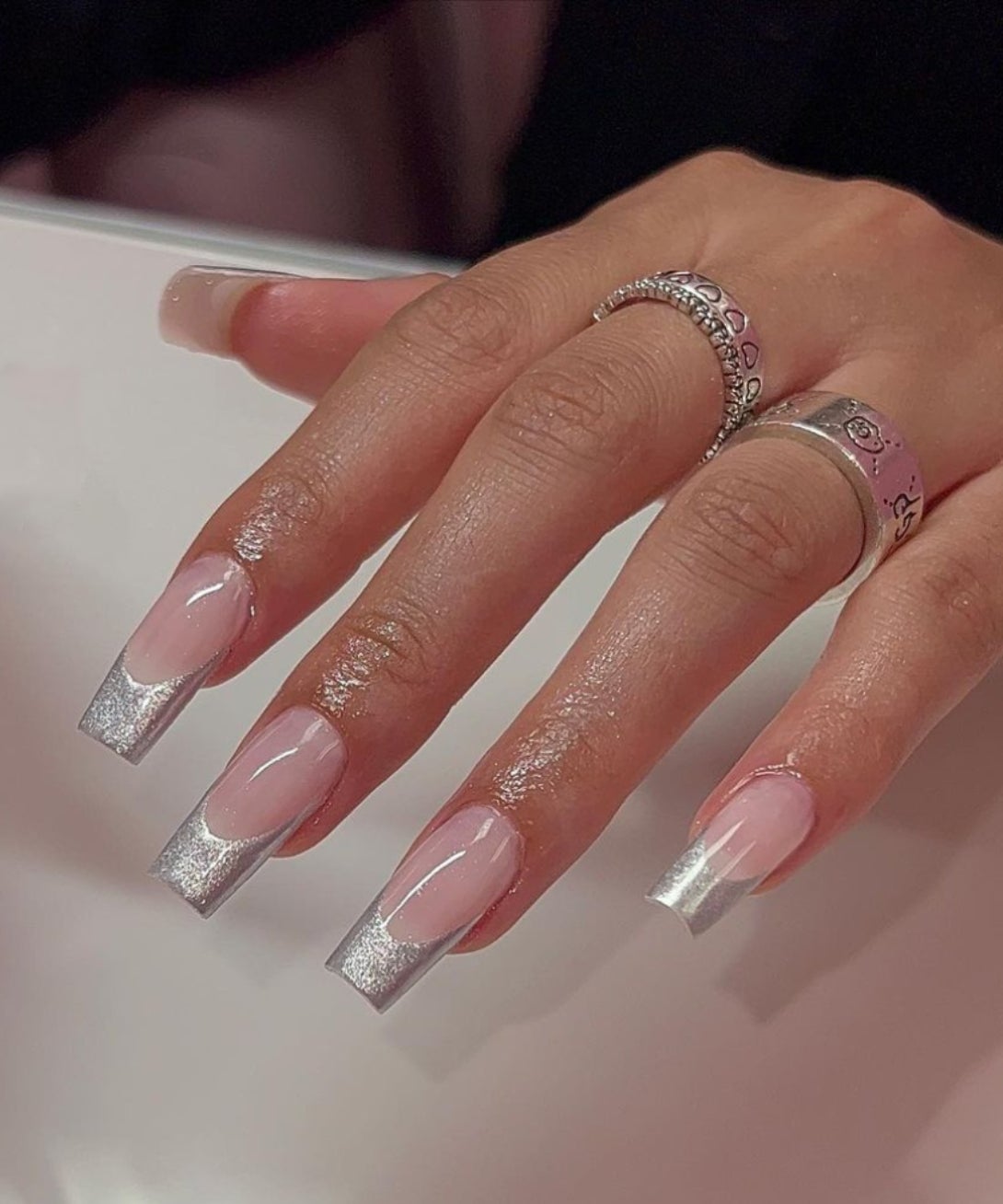Spring has arrived, bringing with it some of the year’s most stunning nail colors. This season, milky pastel hues are stepping into the spotlight, offering creamier and more muted alternatives to classic pastels. Get ready to embrace lighter shades like buttery baby pink, pearly light lavender, and cool mint green. Plus, exciting nail designs are making waves, featuring gradient tips, funky French styles, and dreamy accents that elevate the traditional manicure. Ahead, explore our favorite pastel nail ideas for this spring—trust us, these inspirations will ignite your creativity for your next mani!
BARBIE PINK PASTEL

What do you get when you combine baby-pink French tips with glittery Barbie-pink accents? A manicure dream come true! This flirty and cute design is perfect for any occasion.
PASTEL CHROME
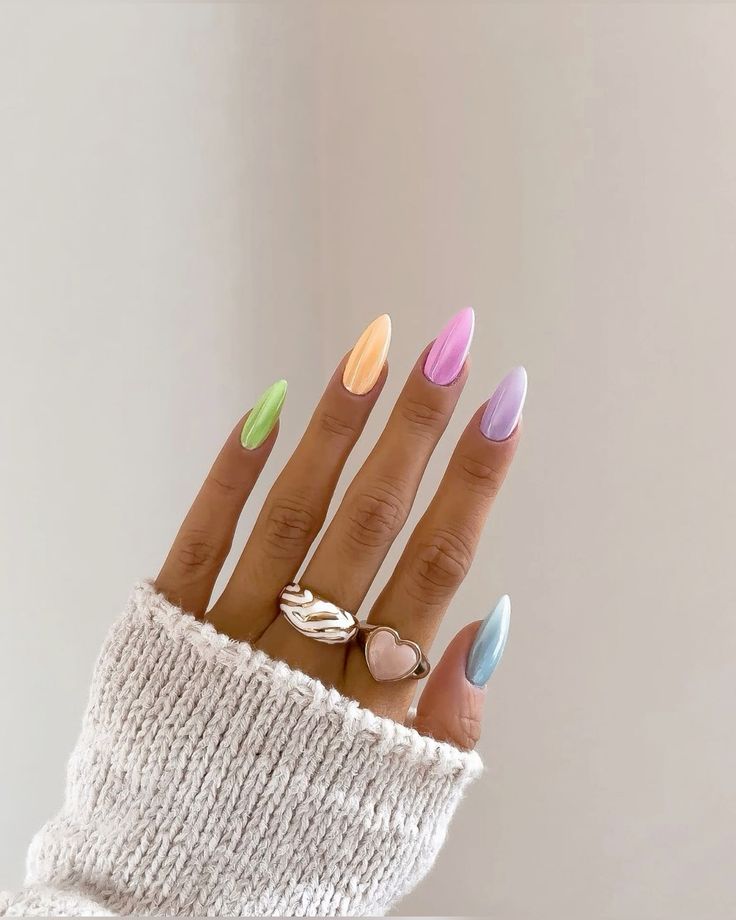
Is there anything better than pastel chrome nails? We think not! This stunning nail design combines two of our favorite elements, resulting in beautiful shades that shimmer and shine in the light.
PASTEL SUNSET DESIGNS
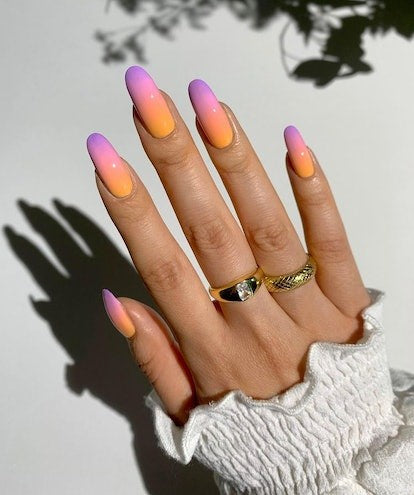
I’ll fully admit that this design isn’t the easiest and may require a professional nail technician, but it’s so dreamy that I couldn’t leave it off the inspiration board. If you decide to try it yourself, incorporating a subtle pop of pastel purple will create a stunning sky-like effect.
TANGERINE ORANGE
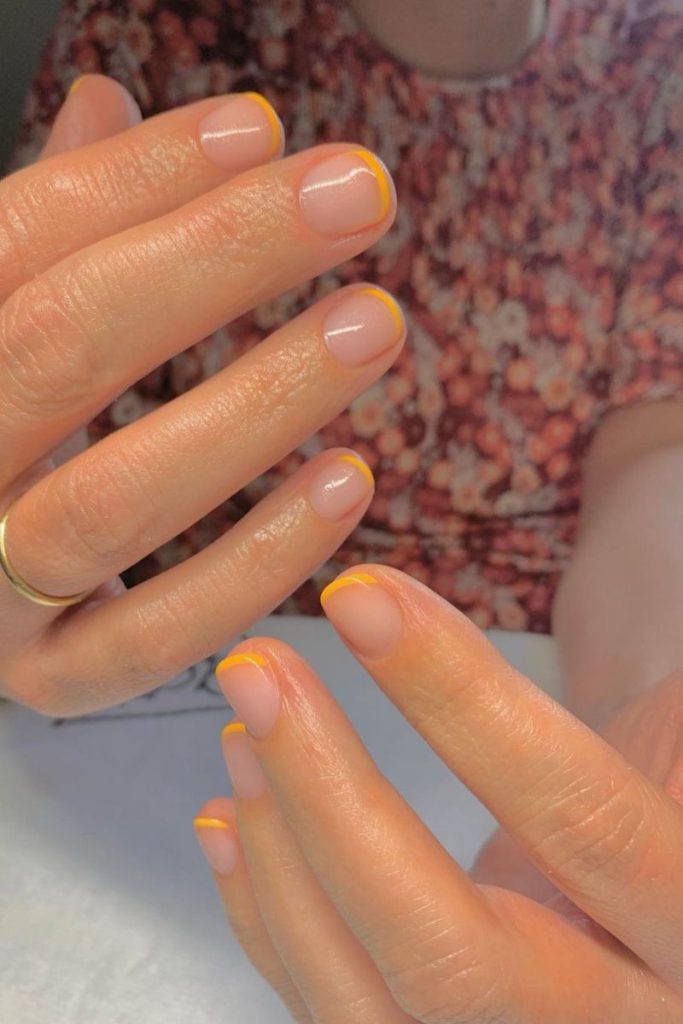
If you’re looking to sport orange nails without going too bold, we have the perfect solution. This pastel orange shade is bright yet subtle, making just the right statement without being overwhelming.
EASTER EGGS
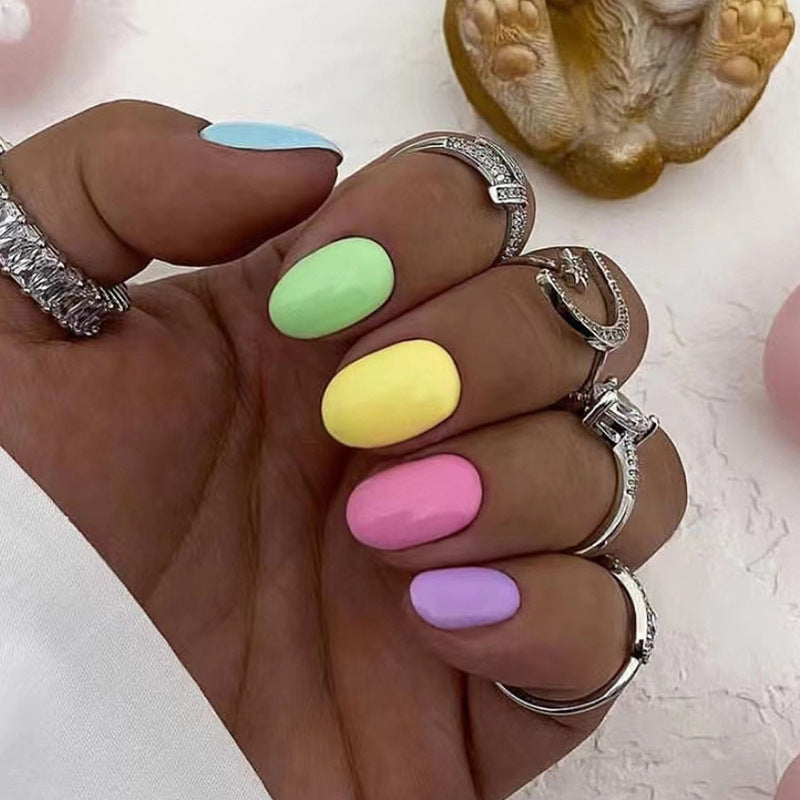
Can’t decide on just one color? Why not choose them all! This adorable manicure showcases the best shades of spring, bringing them together in perfect harmony.
BABY BLUES
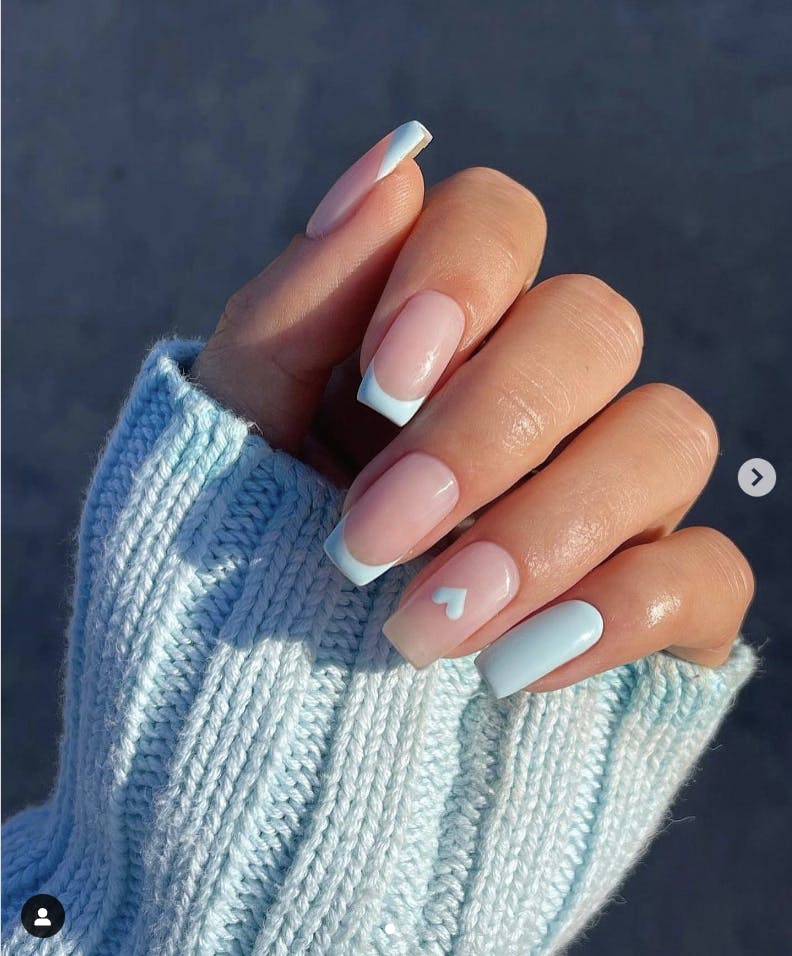
In our opinion, sky blue is one of the most beautiful colors on the color wheel. It’s dainty, chic, and sophisticated, effortlessly complementing a variety of shades. This lovely design strikes the perfect balance between being aesthetically pleasing and a touch adventurous.
MILKY LAVENDER WITH FLOWER ACCENTS
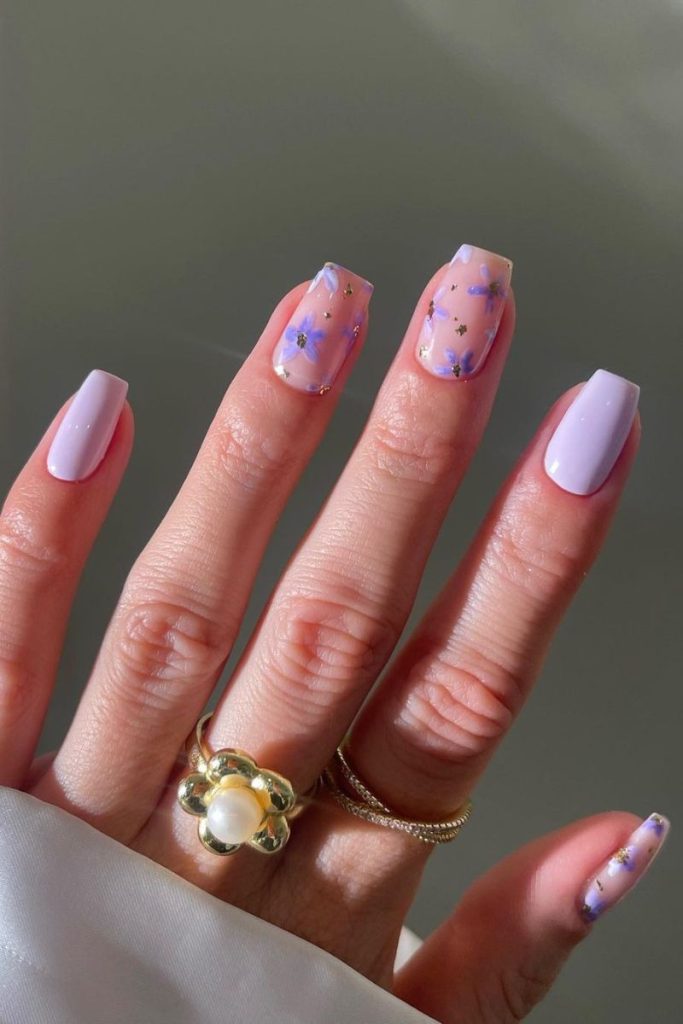
Milky lavender is one of the season’s hottest hues, and it’s easy to see why. This soft shade beautifully bridges the gap between deep winter tones and vibrant summer colors, making it incredibly versatile. Plus, the floral accents are perfect for spring!
DOUBLE-FRENCH PASTEL TIPS

As the saying goes, two is better than one! This double French tip design lets you showcase your two favorite shades right at your fingertips. Experiment with combinations like pink and yellow, blue and purple, or green and orange—the possibilities are endless!
GEOMETRIC SHAPES WITH METALLIC ACCENTS
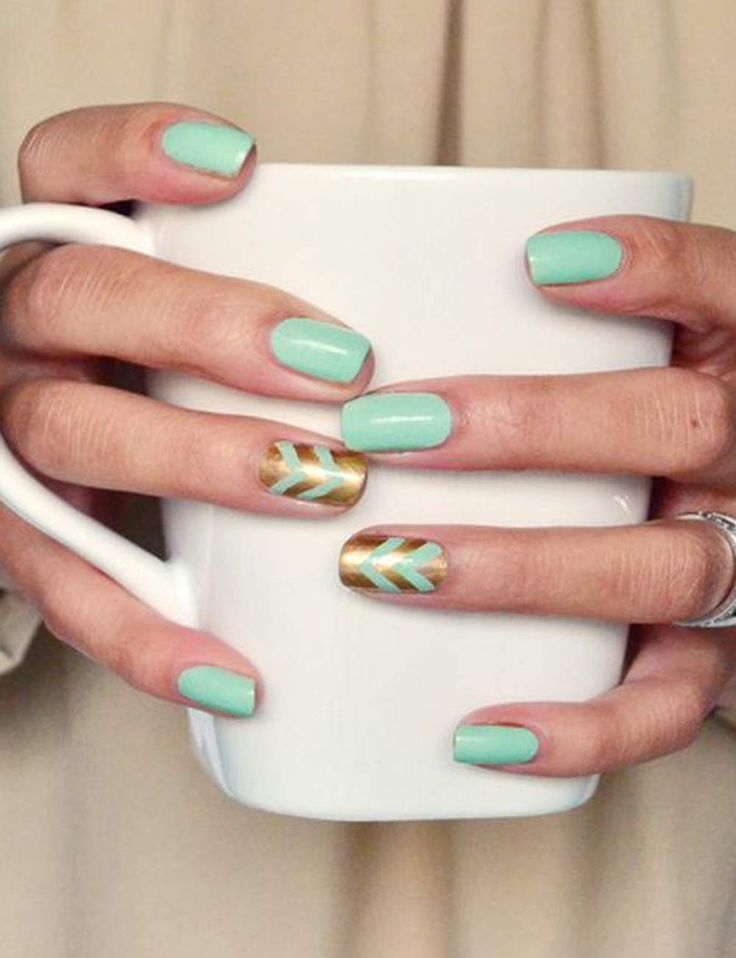
Incorporating geometric shapes with metallic accents is a chic way to elevate pastel colors and give them a modern twist.
CLOUDY SKIES
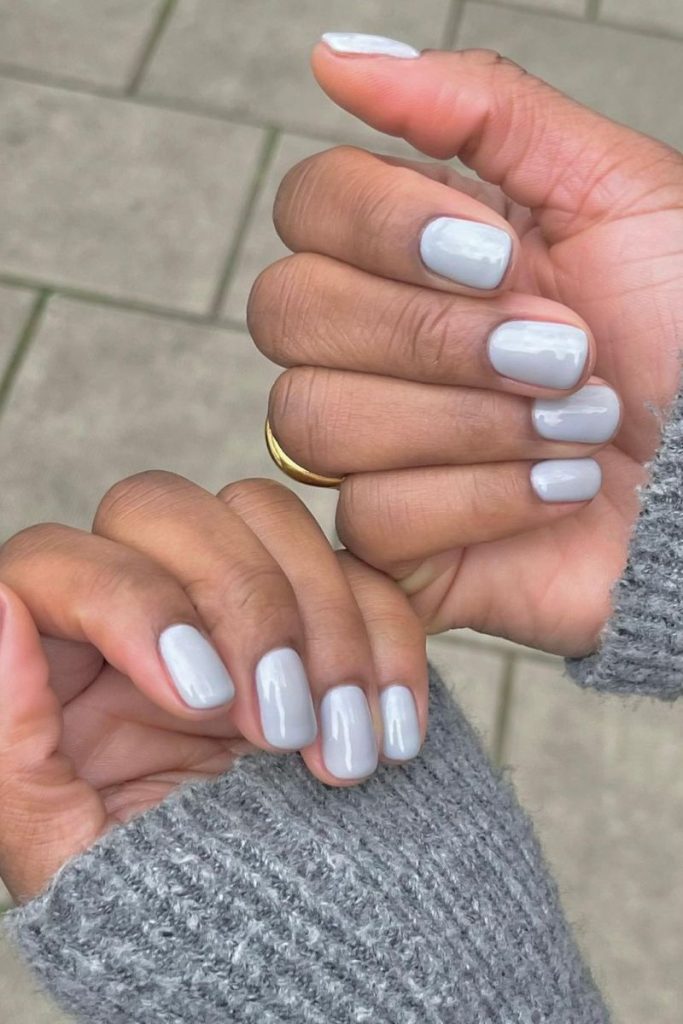
If you lean towards neutral, muted colors but still want something fun for spring, consider this cloudy gray shade. It features a subtle blue undertone without being overly bright. The best part? This manicure pairs beautifully with any outfit.
BLUE-AND-PINK GRADIANT DESIGNS
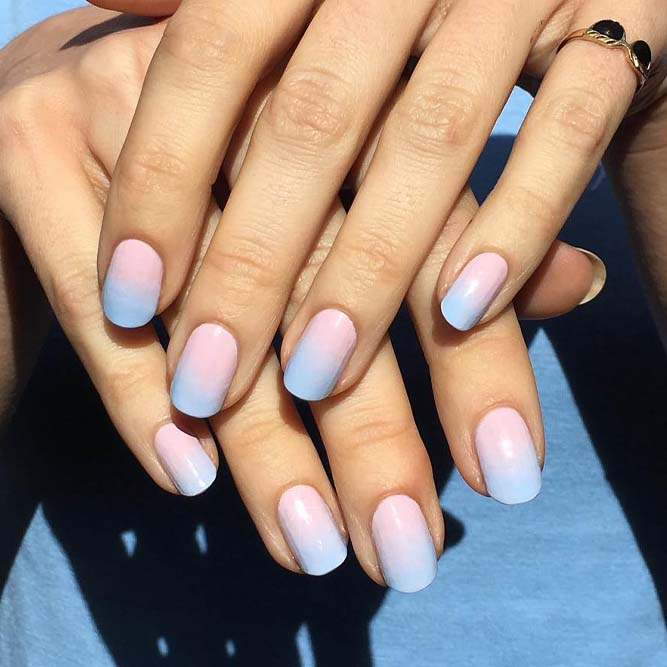
This design may look more complicated than it actually is. You can easily DIY your own gradient-style nails by applying your chosen colors to a sponge and gently dabbing them onto your nails until you achieve your desired hue.
COOL MINT GREEN
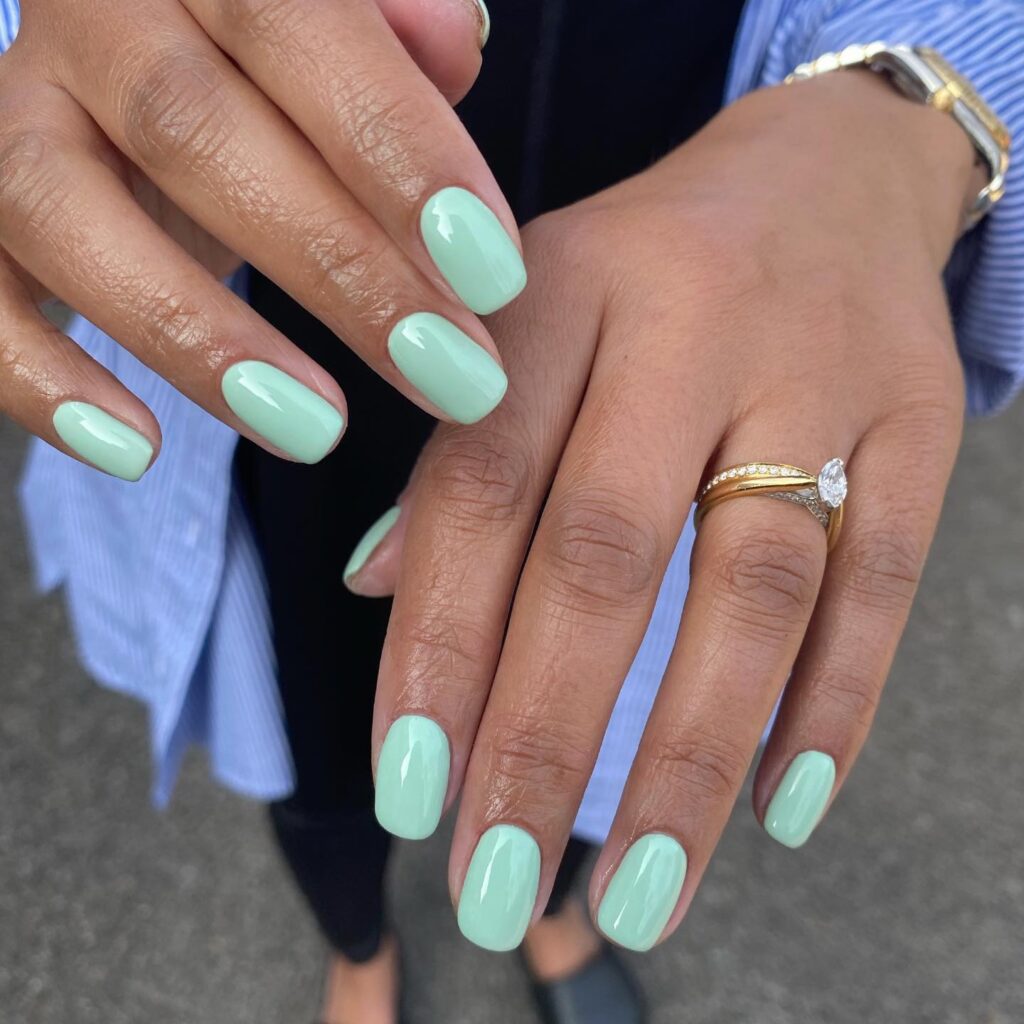
Bright, cheerful, and often underrated, mint green is a shade we wholeheartedly embrace. While lime-green nails dominated last year, 2024 is shifting towards more muted hues that offer a subtler charm. Count us in!
OMBRÉ PASTEL FRENCH TIPS

Ombré French tips in a monochrome palette offer a playful twist on pastels.
REVERSE FRENCH PASTEL NAILS
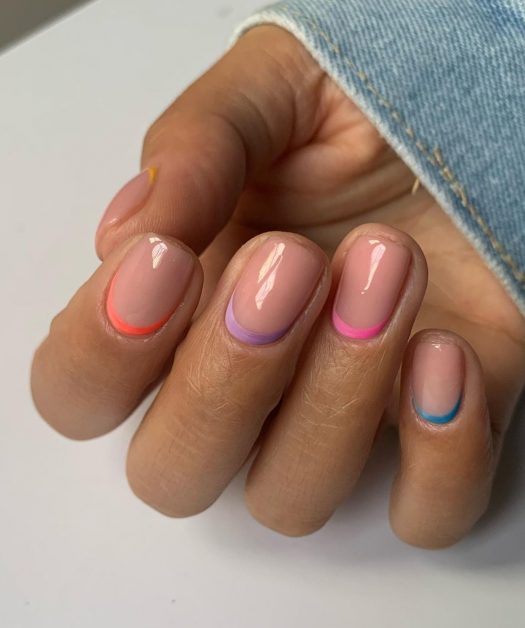
Why settle for just one color when you can flaunt them all? This reverse French rainbow pastel manicure is as cute as it gets. Plus, even as your nails grow out, they’ll continue to look fabulous.
RAINBOW PASTEL GRADIENT TIPS
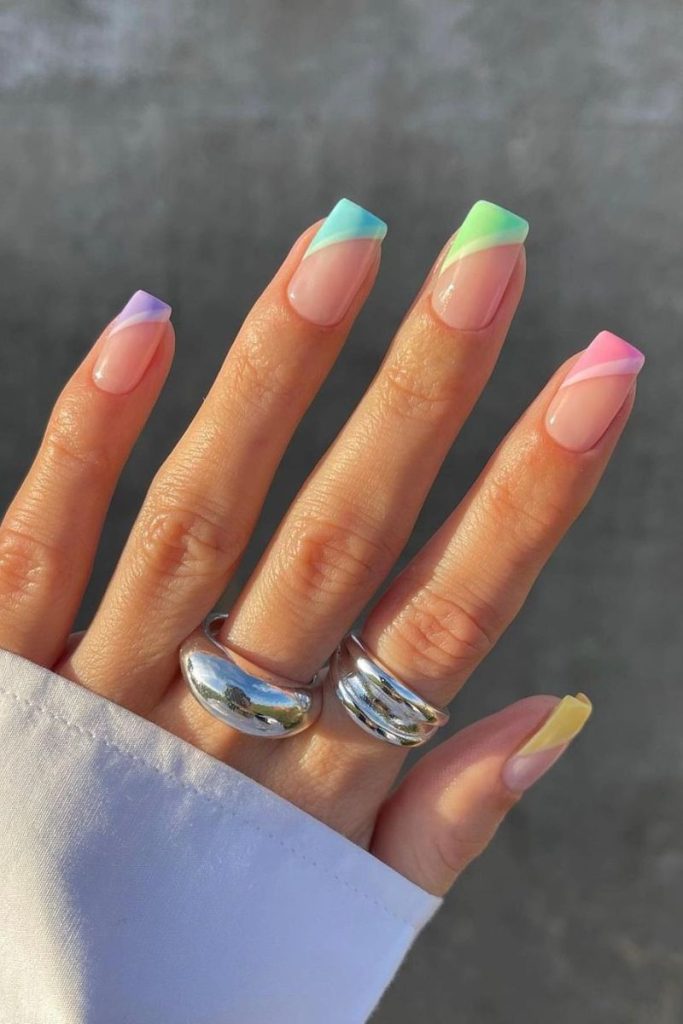
Elevate your nail game with this chic pastel gradient style. While the gradient may be subtle from a distance, it reveals a delightful surprise that’s sure to earn you endless compliments. Plus, the rainbow hues provide the perfect pop of color!
PASTEL YELLOW SQUIGGLES

Sure, this design requires extra commitment, but if you can pull it off, it will be 100% worth it. Be sure to use a super thin brush to achieve the best results for a look like this.
LEMON YELLOW
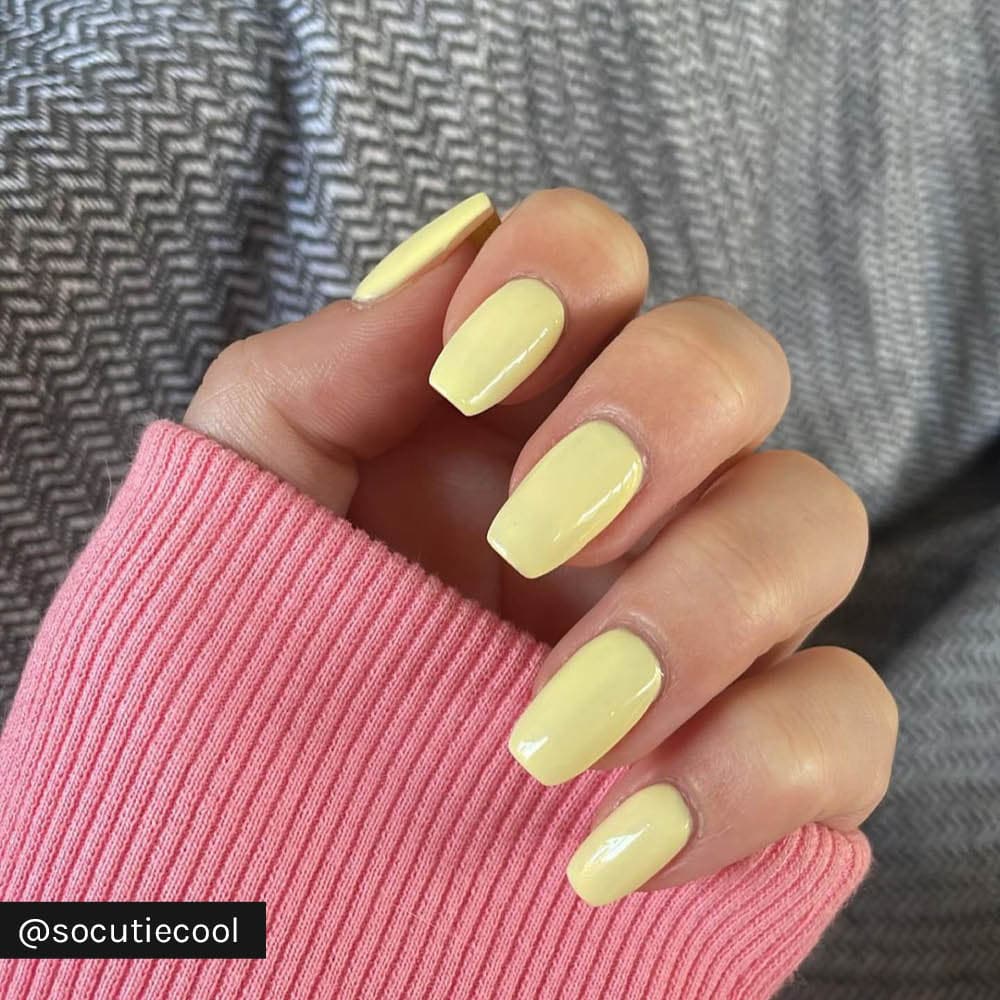
We must admit, we don’t see yellow manicures as often as we’d like. This cheerful hue is both bubbly and tasteful, making it a dreamy shade for any season.
LIGHT PINK TIPS
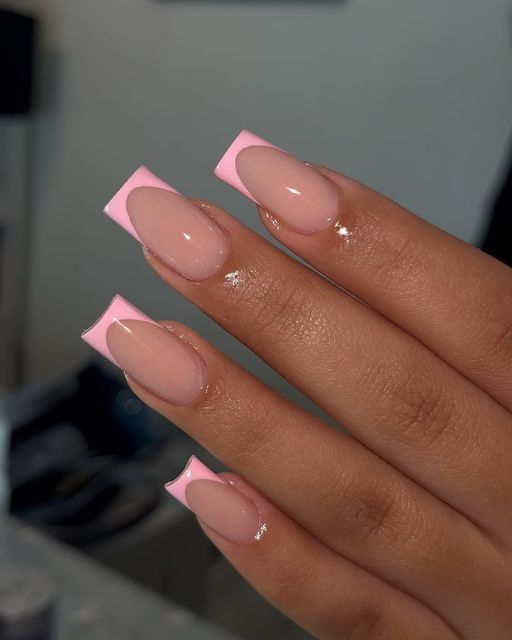
Timeless, classic, and always in style, you can never go wrong with a French manicure. To give it a spring twist, choose light pink tips. If you’re feeling particularly adventurous, add a fun design to your thumbs for an extra flair!
SHADES OF BLUE & WHITE
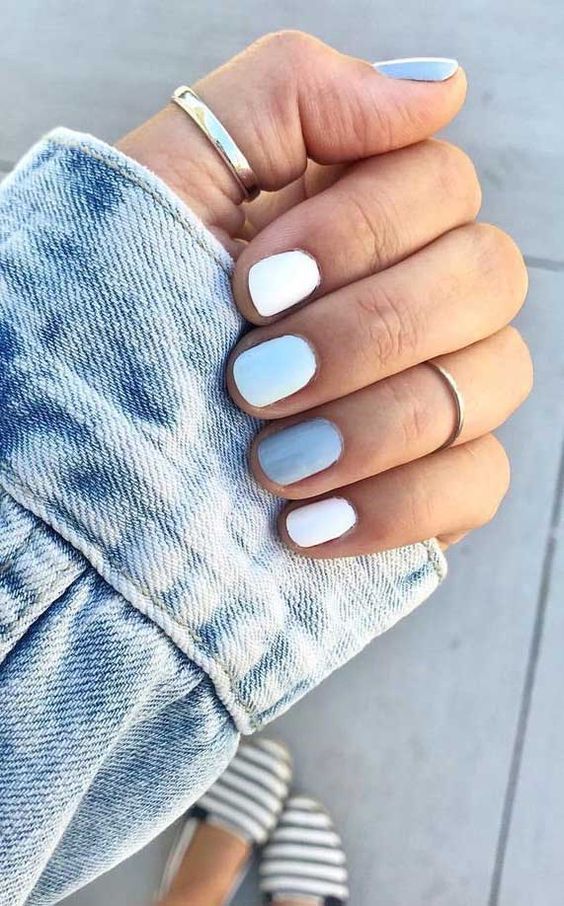
If you’re aiming for a softer blue-toned look, consider these pastel hues paired with subtle whites and grays to really make the colors pop.
PASTEL FLORAL DESIGNS
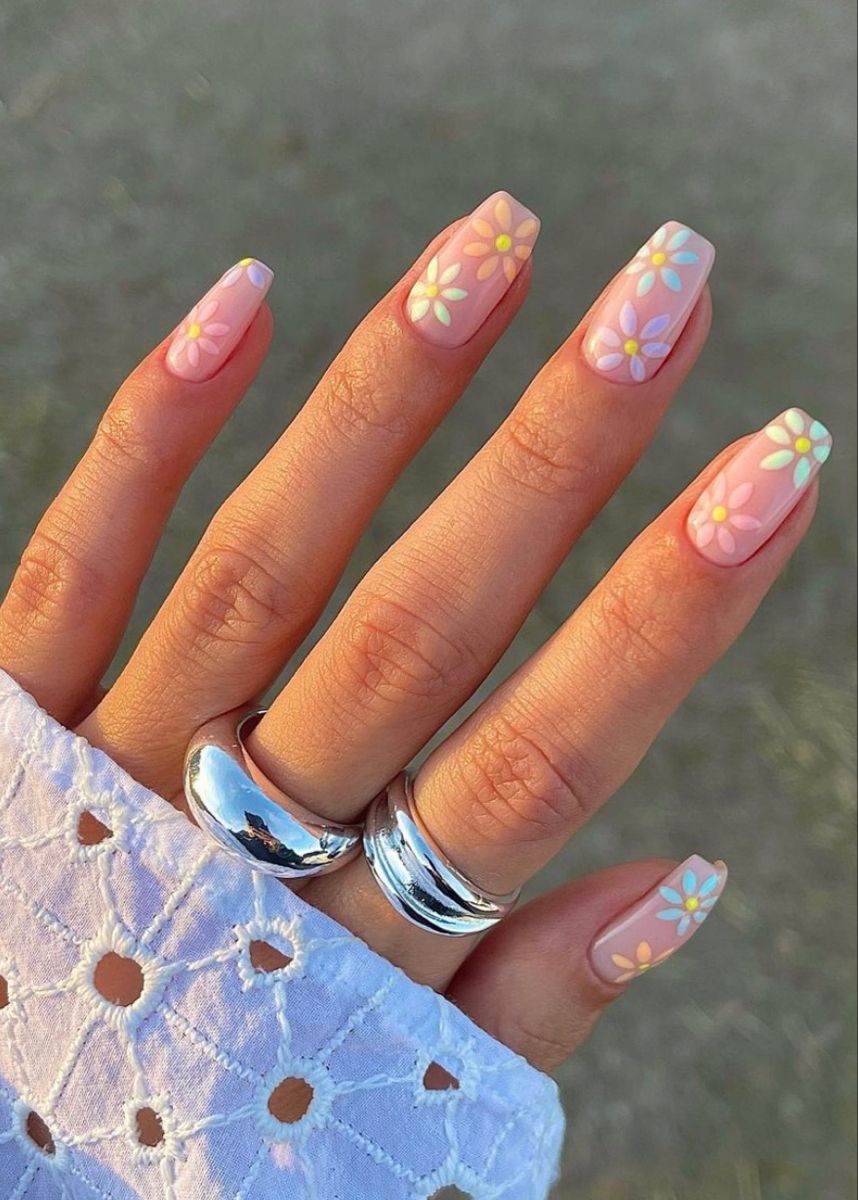
Before you hit me with a Devil Wears Prada quote, just take a look at how adorable this little floral design is atop a lilac nail shade! You really can’t argue with that.
CONCLUSION
In conclusion, pastel nails are a versatile and timeless choice that effortlessly elevate any manicure. Whether you prefer soft pinks, calming blues, or muted yellows, pastel shades can complement any style and occasion. With endless design possibilities—ranging from minimalist looks to intricate patterns—pastel nails allow for personal expression while embracing the refreshing spirit of the season. So go ahead, indulge in the soft hues and let your nails make a charming statement!

